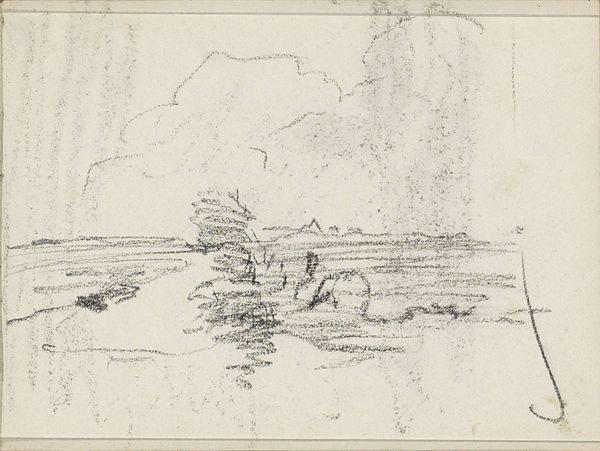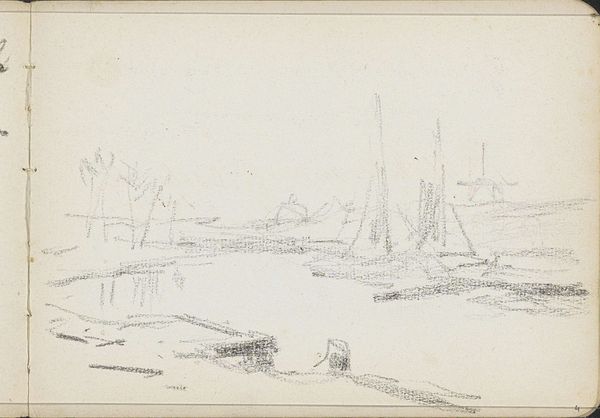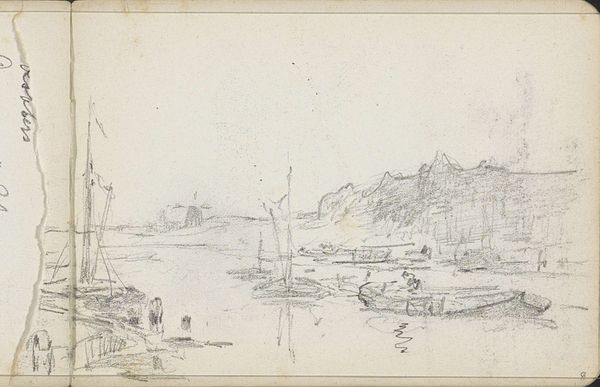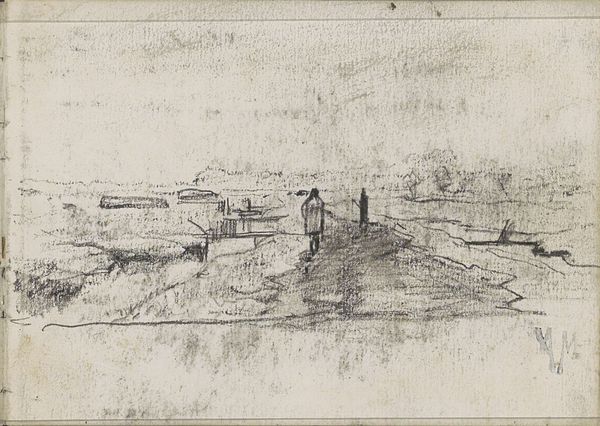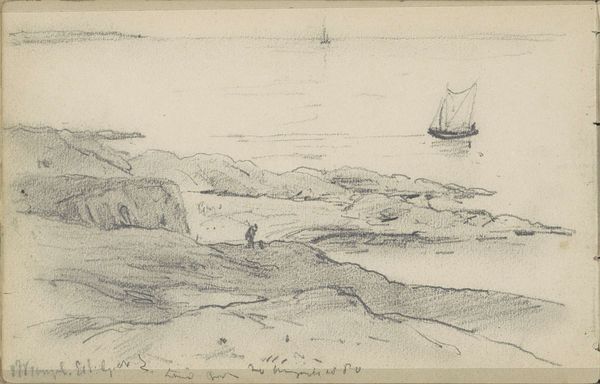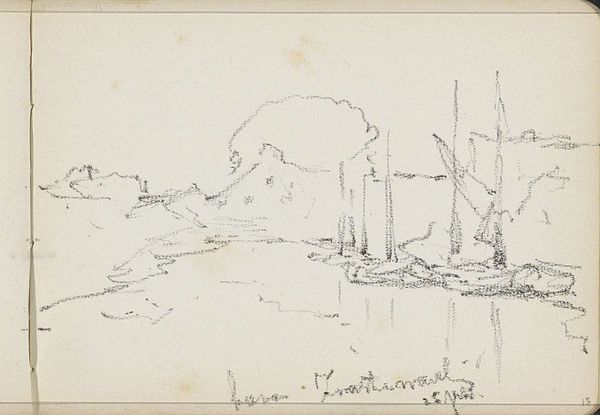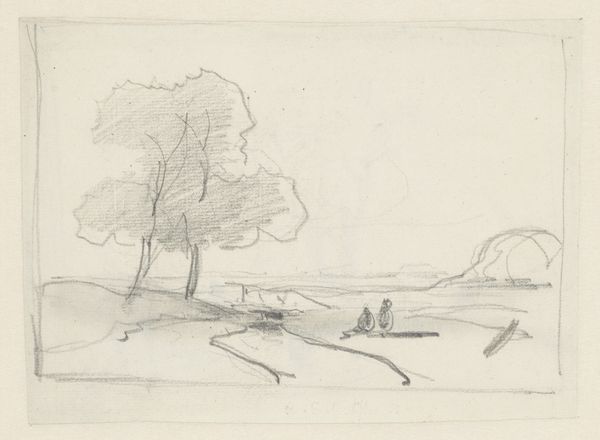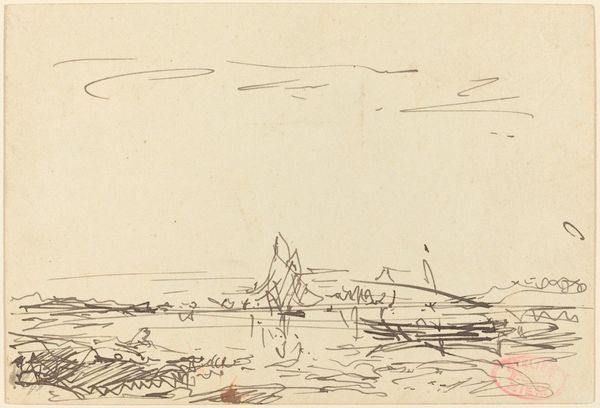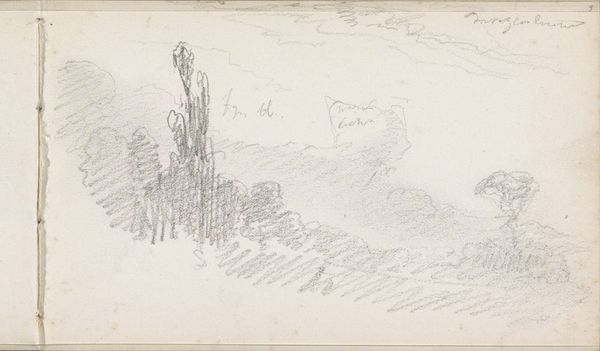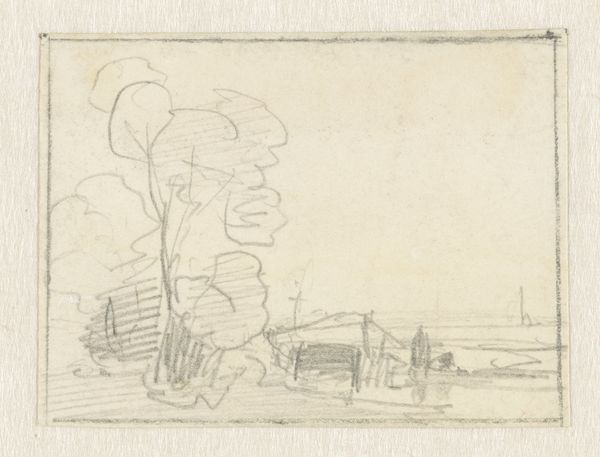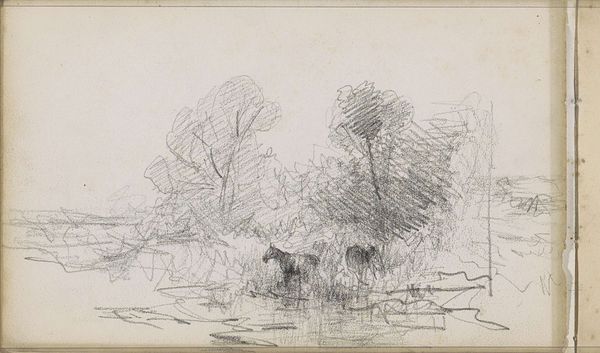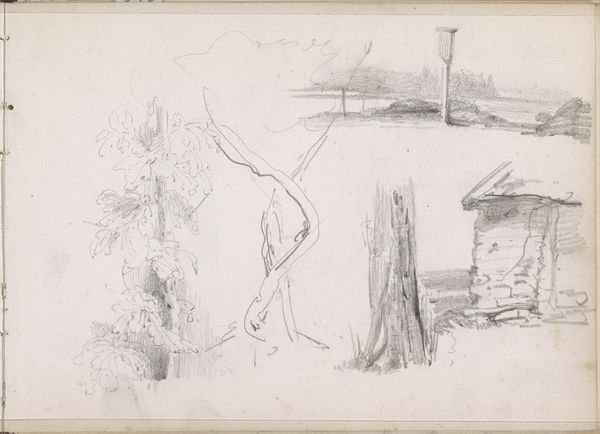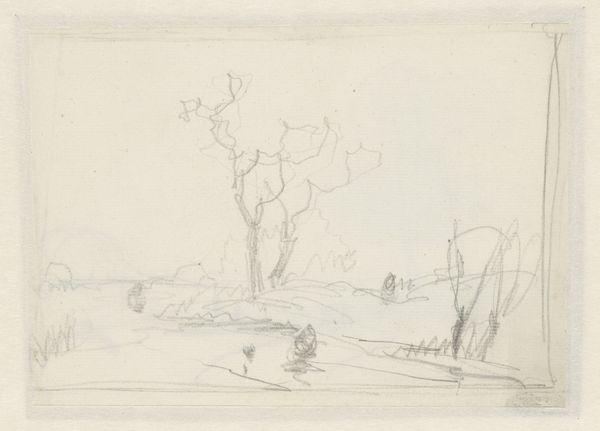
Dimensions: height 114 mm, width 159 mm
Copyright: Rijks Museum: Open Domain
Curator: Here we have Willem Cornelis Rip’s “Path and Mill on a Canal,” dating from 1907. The piece is rendered in pencil. What are your initial thoughts? Editor: It’s… fragile. The pale graphite on this aged paper creates a fleeting impression, like a memory half-recalled. There is such interesting repetition with the long vertical marks throughout. Curator: Absolutely. Considering its context, Rip likely intended this work not as a finished piece, but rather a study. Its beauty lies in revealing the artistic process itself. Notice the marks in the right lower corner suggesting he was exploring an entirely different subject, making it both preparatory and a peek into Rip's material circumstances as he explores ideas and reuses surfaces. Editor: I’m intrigued by how the composition guides the eye. The road cuts a sharp diagonal across the right, leading to the windmill. What draws me in is the repeated forms: The shapes create echos that carry you through the work. Curator: The formal organization is strong here. However, consider the socioeconomic dimensions. Windmills weren’t just picturesque motifs, they were crucial infrastructure. Rip’s choice underscores the human modification of landscape to facilitate industry, especially around water systems for transport. How these canals become conduits not just for people but products. Editor: It seems to me, his technique underscores that industry, wouldn't you say? With the repetition you highlighted. He uses strokes and hatching to evoke depth and the flatness of the water. It reflects a focus not just on depiction but on the emotional essence of the landscape, so it makes sense for him to prioritize those details. Curator: Well, and remember that, for the people depicted, the efficiency of those waterways was vital for sustaining economic exchange. A deeper analysis demands an awareness of the means of artistic production but also of all material culture. Editor: Your reading really deepens my engagement with this delicate drawing. I think, on balance, it manages to be both about the practical application of landscapes and it's enduring charm and mystery. Curator: Indeed. Bringing different critical perspectives into play always broadens our understanding, showing how intertwined labor, industry, and our shared material realities truly are.
Comments
No comments
Be the first to comment and join the conversation on the ultimate creative platform.
